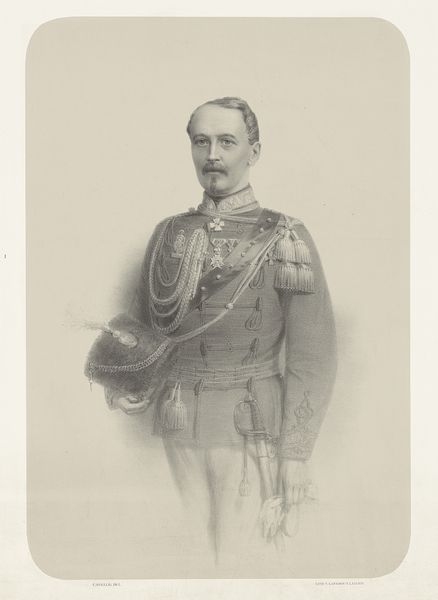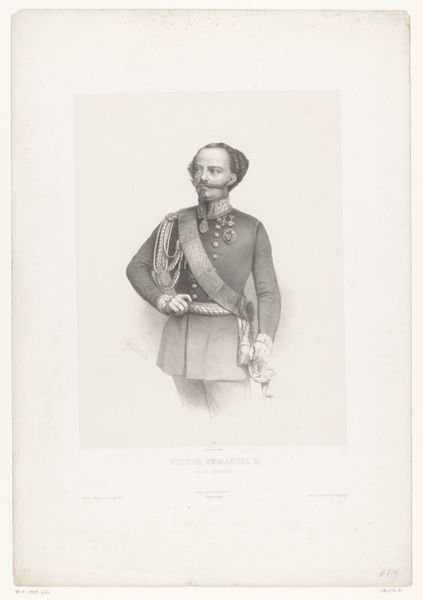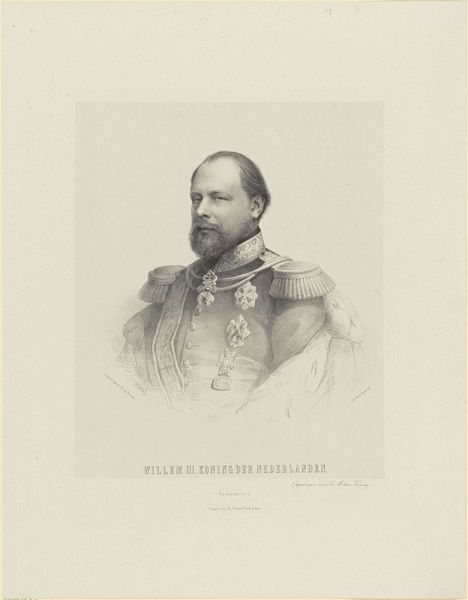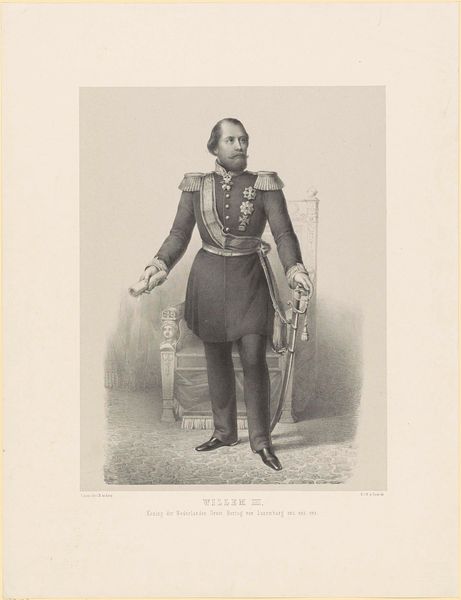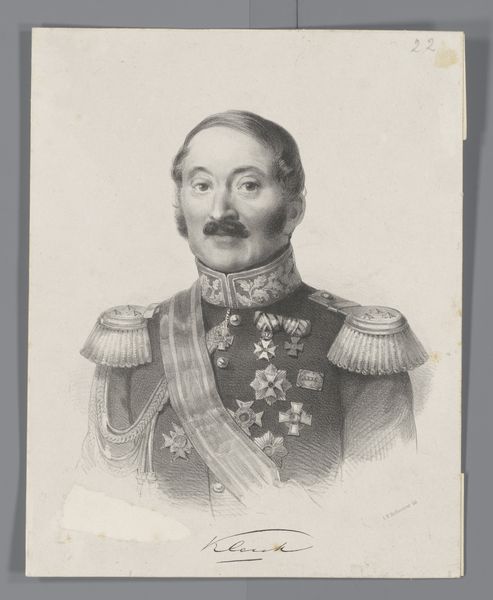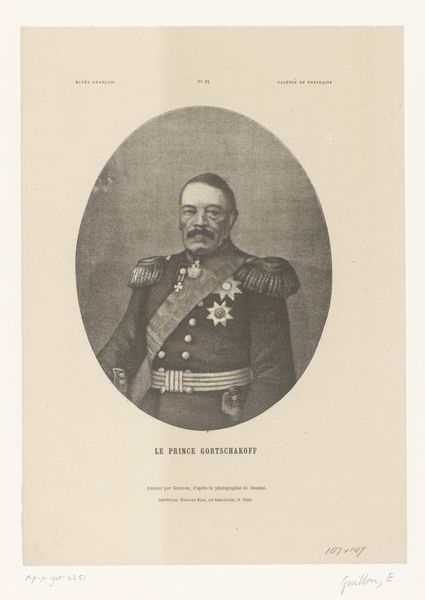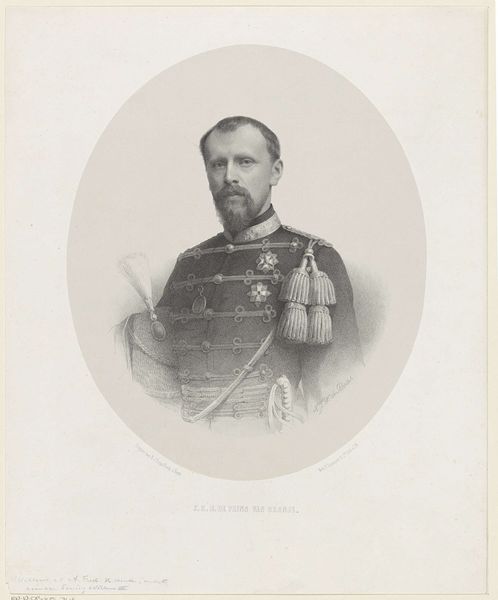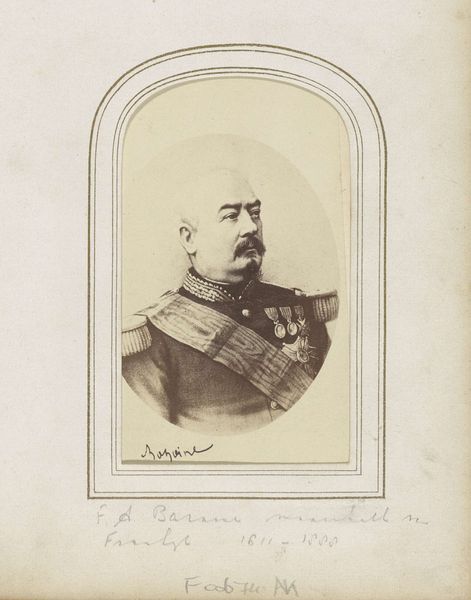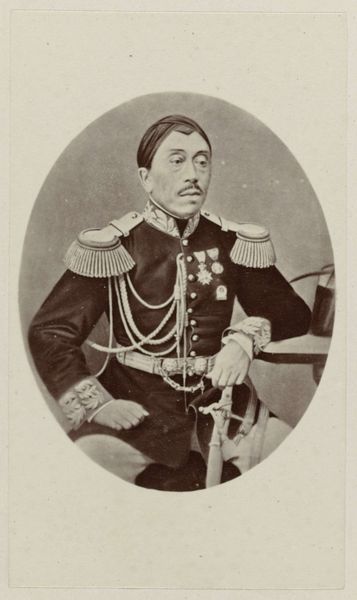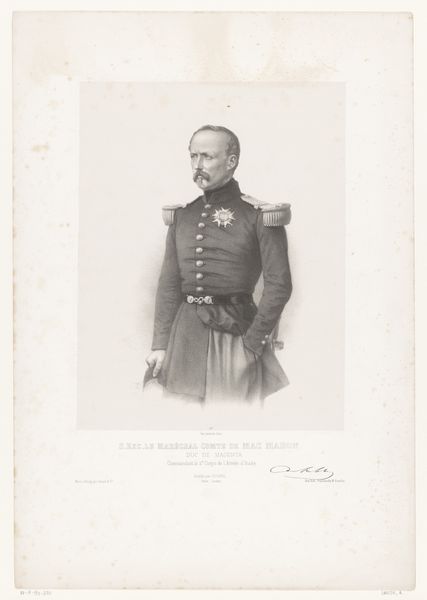
drawing, pencil
#
portrait
#
pencil drawn
#
drawing
#
pencil sketch
#
pencil drawing
#
pencil
#
portrait drawing
#
academic-art
#
realism
Dimensions: height 247 mm, width 159 mm
Copyright: Rijks Museum: Open Domain
Curator: At first glance, I'm struck by the formality and slight austerity of this portrait. It's Pierre Jean Edmond Castan's "Portret van Baldomero Espartero," likely created sometime between 1827 and 1892. Editor: My eye is drawn to the incredible detail achieved with just pencil. Look at the way the light catches the metallic elements of his decorations and uniform! It feels less about capturing the person and more about meticulously recording material and status. Curator: Indeed. Let's consider Espartero's historical position. He was a prominent Spanish general and politician during a tumultuous period in Spanish history, and this portrait functions almost as a form of political communication. Editor: Right, but it also reflects the prevailing artistic trends of the time. The artist's labor becomes very evident. You can practically feel the pressure of the pencil on paper, replicating details. The work’s "realism," you could say, serves to naturalize the subject's authority, making it seem inevitable rather than constructed. Curator: I agree. Academic art conventions certainly play a role in legitimizing Espartero's image, and this depiction offers much insight into the values of the Spanish court during that period and what they desired to project. What kind of conversations it spurred about military glory and national identity interests me. Editor: Absolutely. And what does this precise rendering mean in terms of class? For the elites of the time, access to such artistry was commonplace. How does mass reproduction play a role here, with drawings being more easily and widely shared than painting? Curator: It pushes me to think about how even seemingly straightforward portraiture contributes to broader systems of power and cultural production. This drawing serves both as documentation and a site of cultural encoding. Editor: For me, focusing on materiality helps avoid art history remaining a story of great men and aesthetics. We see the tools, the skills, the societal position, the political conditions necessary for a portrait like this to even exist. Curator: So, it serves as a lens to view 19th-century society. The pencil itself is also a quiet commentator. Thank you.
Comments
No comments
Be the first to comment and join the conversation on the ultimate creative platform.
